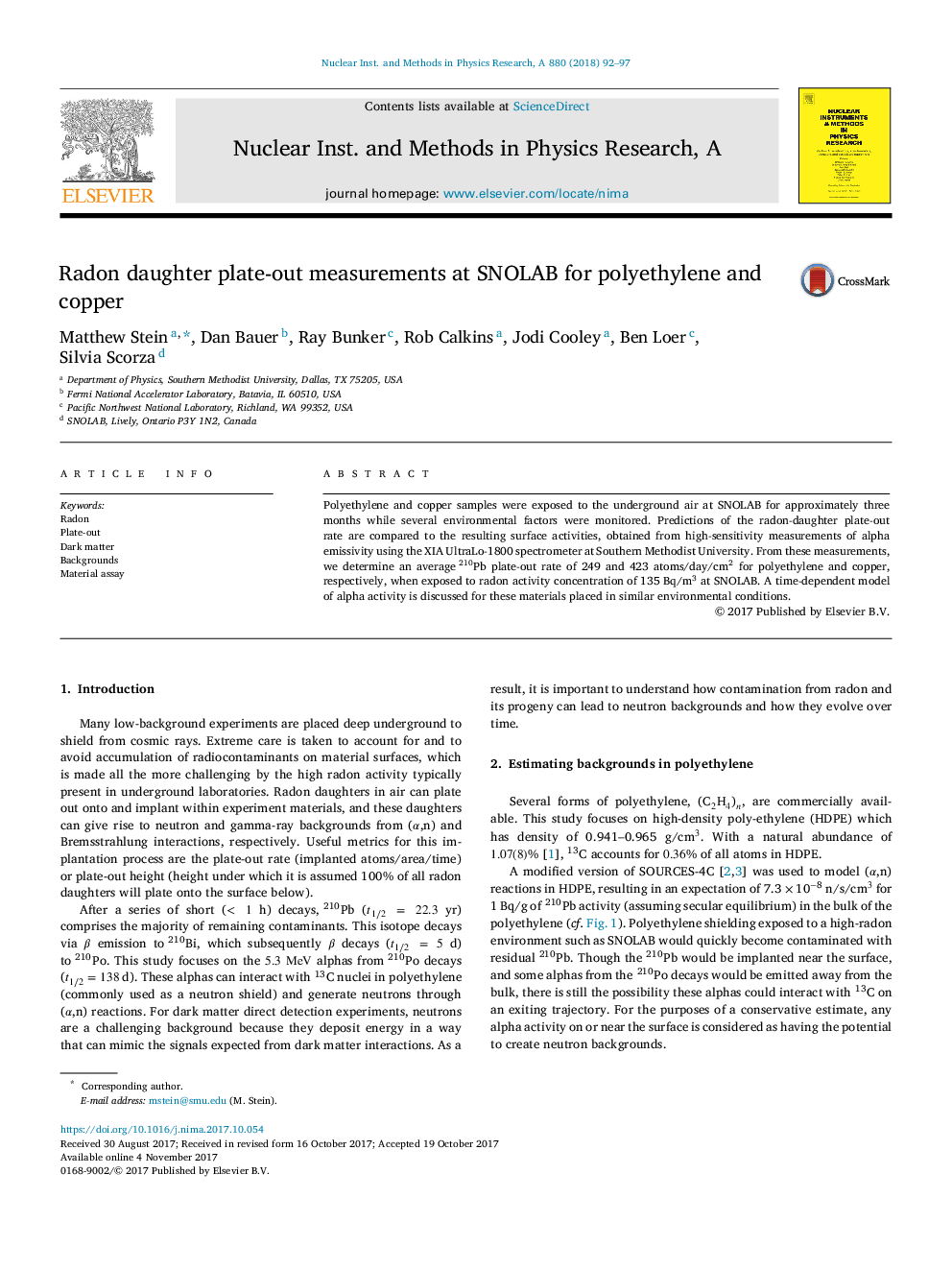| Article ID | Journal | Published Year | Pages | File Type |
|---|---|---|---|---|
| 8167188 | Nuclear Instruments and Methods in Physics Research Section A: Accelerators, Spectrometers, Detectors and Associated Equipment | 2018 | 6 Pages |
Abstract
Polyethylene and copper samples were exposed to the underground air at SNOLAB for approximately three months while several environmental factors were monitored. Predictions of the radon-daughter plate-out rate are compared to the resulting surface activities, obtained from high-sensitivity measurements of alpha emissivity using the XIA UltraLo-1800 spectrometer at Southern Methodist University. From these measurements, we determine an average 210Pb plate-out rate of 249 and 423 atoms/day/cm2 for polyethylene and copper, respectively, when exposed to radon activity concentration of 135 Bq/m3 at SNOLAB. A time-dependent model of alpha activity is discussed for these materials placed in similar environmental conditions.
Keywords
Related Topics
Physical Sciences and Engineering
Physics and Astronomy
Instrumentation
Authors
Matthew Stein, Dan Bauer, Ray Bunker, Rob Calkins, Jodi Cooley, Ben Loer, Silvia Scorza,
